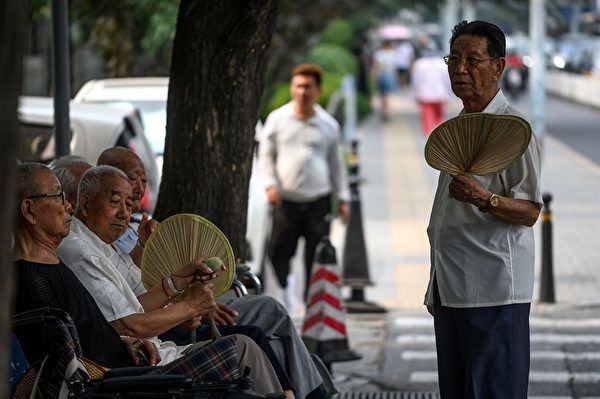After the Chinese Communist authorities passed the decision and plan to delay retirement (referred to as “延退” in Chinese), it has sparked opposition from the public. Some employees working within the system expressed pessimism, while private business owners believe that delayed retirement will lead to increased operating costs.
According to the regulations on delayed retirement issued by the Chinese State Council, starting from January 1, 2025, the statutory retirement age for male employees (originally 60 years old) will be postponed by one month every four months. By this calculation, male employees born between January and April 1965 will have to work an additional month; those born in September 1976 and later will retire at the age of 63.
This policy will have a significant impact on males born after the 1970s.
According to Hong Kong media Ming Pao, Mr. Wang, who was interviewed, mentioned that he would have to delay his retirement by nearly two years. His current consideration is to retire at the originally set age of 60 because he has elderly family members to take care of and his children are not around. He wishes to retire early to reunite with his family.
The responses from two interviewed men from the 1990s generation towards the delayed retirement policy were also negative. Mr. Zhang, who works in a state-owned enterprise, expressed a sense of helplessness, stating that despite feeling immense work pressure and insufficient rest, he “has to accept it and just earn more money.”
Mr. Xu, who works within the system, expressed a more pessimistic view. His job requires both office work and frequent business trips, and he fears that by the time he reaches retirement age, his physical and mental capabilities may not be sufficient to cope. He worries that his eyesight might worsen, his physical strength might diminish, making it difficult to work with a computer or travel. He likened this scenario to being a “useless person” and added that it would be even more challenging to sustain work if he were to have some illness. He also mentioned that entrusting work to people in their sixties would be unsettling for the unit he works for. He believes that this policy might change in a few years.
Ken, the pseudonym of a business owner of a Hong Kong-funded enterprise with branches in several mainland cities, stated that the delayed retirement policy has a significant impact on the company’s operating costs, particularly labor costs. He explained that salaries for older employees are generally higher, and delayed retirement means reducing the number of positions for younger individuals with lower salary levels.
The delayed retirement plan differentiates between genders. Women who were originally set to retire at 55 (female cadres) and 50 (female workers) will now retire at the ages of 58 and 55, respectively. In other words, women born in 1970 will start experiencing gradual retirement delays if they become female cadres, reaching the retirement age of 58 if born in September 1981; ordinary female workers will be affected starting from those born in 1975, with those born in November 1984 needing to work until 55 to retire.
Miss Xu, a civil servant born in the 1990s, has already decided that she will opt for early retirement due to not wishing to work until the age of 55.
A “00s” young individual, Xiao Du, who is far from retirement, believes that discussing retirement at present is utterly meaningless. Xiao Du stated, “I don’t even know how many years I have to work. Who knows, I might die before reaching that time,” and she is also considering entrepreneurship.
The delayed retirement policy significantly impacts social insurance (s…
newline
…uch as social security) payment factors. Previously, retired re-employed individuals did not need to pay “five insurance and one fund” themselves or by the company; however, the statutory age for delayed retirement will increase this expense. Ken mentioned that the company’s payment of “five insurance and one fund” accounts for about 30% of the employee’s salary level, with employees contributing over 10% themselves.

